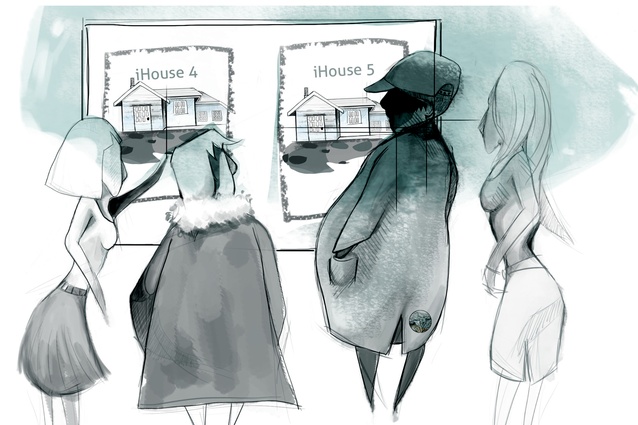Auckland’s future direction
The release of Auckland Council’s proposed Unitary Plan saw a frenzy of activity in the media and in the public domain late last year, with heightened public interest in how the Council is going to implement the Auckland Plan’s policy goals. This is, at one level, a sign of a strong and functioning democratic society. However, five months later, it is concerning to observe that public debate about the Council’s proposed Unitary Plan has largely subsided.
In the main, commentary is framed around housing supply, affordability and the suggestion that making more residentially zoned land available at the city’s edge will somehow solve Auckland’s growth issues. Preferences for future forms of housing are presented somewhat starkly as ‘do you want “high-rise towers” in your local town centre’ or ‘do you want to keep the traditional 600m2 suburban section?’, reinforcing the status quo of Auckland’s sprawling nature without any real consideration of the costs these choices may impose on future generations of Aucklanders. In my view, we need more types of housing option, not fewer, to meet the diverse and changing needs of the wider community and we need a debate which does not limit us to a single form of traditional housing stock.
And the discussion surrounding the Unitary Plan shouldn’t be about just housing. While this is, of course, a critical element, ultimately, it is about the future urban form that Aucklanders want for their city and for their children to inherit. The debate should be about the wider urban planning picture, addressing employment options, reducing travel demand, providing a range of travel choices, the quality of the public realm, the quality and design of our built form, the provision of usable and functioning open space, shopping and entertainment, and the protection of our natural and coastal areas.
It is not surprising that some of Auckland’s most liveable and desirable suburbs are located in close proximity to working, shopping and entertainment opportunities, with established and frequent public transport options. Residents of these areas can enjoy and value these opportunities without enduring travel for long distances. They have the ability to walk to their local shops and services and interact with their neighbours. Their children can play with each other in their local parks, developing a strong sense of community and place. Shouldn’t this be the central goal of the proposed Unitary Plan – to provide this standard of urban living for all
our residents?
While the issue of housing affordability is rightly prominent, the critical question remains to be addressed: how do we create a strong sense of community and place, which provides all these services (currently enjoyed by residents in desirable suburbs) in the areas targeted to accommodate Auckland’s future growth, whether within our existing town centres or in the newly developing areas of the city? This should be an overarching consideration and drive public discussion about the proposed Unitary Plan.
The Unitary Plan also needs a strong community voice if the community is going to accept and give effect to it. This, coupled with solid evidence to justify the policy approaches and effective methods to implement the Unitary Plan’s goals, will be critical. These issues should, and I’m sure will, form the basis of the decision-making process of the government’s appointed panel which will be considering the Unitary Plan.
When finally adopted, the Unitary Plan will be ‘our’ – the community’s – document, not simply that of the Council or its makers. It will set the direction for the next 30 to 50 years, providing development rights and opportunities, which we can all understand and take advantage of.
As part of the community’s say over what scale and form we want Auckland to have long term, this discussion must, just as importantly, include the issue of how we are going to pay for it. Unfortunately, infrastructure costs (including ongoing maintenance over its life expectancy) are not at the forefront of many Aucklanders’ minds, except when the Council’s rates bills arrive in our letterboxes or we are asked to pay development contributions on new housing. What we can afford, what we are willing to pay for, and how these costs will be shared between the community, new development and future generations are vital questions that must also form part of this debate.
To address this, I would argue that the Unitary Plan should prioritise the relevant urban planning issues for Auckland, interlinked with the subject of who will pay for all this and how. These challenges are not the Unitary Plan’s alone but will need to be addressed also through the Council’s Long-term Plan (LTP) process which must provide the infrastructure funding needed to pay for our community facilities, public transport and the ‘hard’ infrastructure requirements such as roading, stormwater and wastewater in order to deliver the Unitary Plan’s stated policy goals. This will require political commitment and, potentially, hard choices may need to be made. However, the integration of land-use planning, transportation, infrastructure provision and funding is critical to the success of the Unitary Plan’s strategic urban planning goals.
Returning to the issue of housing, I contend that we cannot address Auckland’s growth issues by simply concentrating on housing supply through zoning more residential land in peripheral locations. We must first consider the types of community we actually are creating and the costs of infrastructure that this form of development will require. In many of our existing peripheral suburban areas, the nearest shop can be over three kilometres away and low population density makes public transport problematic and provides limited options for people who do not have access to private vehicles, keeping in mind not everyone owns a car. Moreover, how does this form of development provide housing choice and adequate options to meet the needs of all members of our community? A ‘one size fits all’ model does not offer choice and will not address the needs of all our future residents. And the infrastructure costs these types of residential developments place on the existing services must be factored in: for example, the impact on the existing roading and wastewater networks, extending these networks, along with the cost of travel for future residents to employment and shopping, etc.
In my view, simply concentrating on housing in this way will not solve Auckland’s housing issues nor enable the development of successful communities which will provide for their overall ongoing needs. We need to consider a balanced approach that provides for a range of housing options in appropriate locations where we can leverage off the existing infrastructure and local services with a choice of well-designed housing and associated services. This will reduce infrastructure cost and travel demand, increase the vitality of existing town centres, provide a range of housing options for all our residents and provide for future urban growth.
Finally, if housing affordability is an issue, which is not the same as affordable housing (even though some seem to think they are the same), I would argue that land supply is only one part of the equation and suggest this equation is far more complex. We must also look at the costs of housing construction in Auckland (and why this is higher than it is in other places), access to, and the cost of, financing large-scale residential development in New Zealand, taxation policy that encourages housing speculation and, finally, the size and nature of New Zealand’s housing construction industry, if we really want to address all the issues affecting housing affordability.
I hope to see more robust debate surrounding the Unitary Plan, and for it to encompass a wider range of issues and be something we all engage in, given this important document will guide our collective futures.











